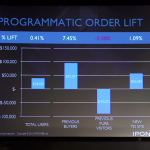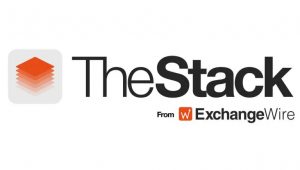Nate Woodman, GM, Demand Solutions at IPONWEB Discusses Incremental Lift & Demand Side Attribution
←Back to Indexby Ciaran O'Kane on 30th Dec 2015 in TRADERTALK
Earlier this year at ATS NYC, Nate Woodman, GM, demand solutions at IPONWEB gave a fascinating keynote presentation in which he discussed: incremental lift and demand side attribution, a topic the industry flirts with but never really dives into. His goal was to plant a seed among the audience and prompt them to re-evaluate the disconnection between ad tech solutions and brand goals.
IPONWEB have been around for around 15 years, they came to market after Google and before Facebook and have seen many different ad tech companies come and go during that time.
IPONWEB have two primary products: U Platform and Bid Switch that are solutions that are built and maintained by IPONWEB for other players in the market. These products allow IPONWEB to plug into inventory from across the industry and thus provide a unique view of trading data.
Using their proprietary data, IPONWEB have been able to understand the incremental value of retargeting ad exposure in relation to search clicks. The image below, taken from ATS NYC 2015 shows that much of the retargeting campaigns run today do not benefit advertisers in the way that was intended. The research shows that it is not until one day after a search click that retargeting starts to provide incremental lift. However, the majority of display media budget is spent reaching consumers in the first six hours following a search click .
This pattern of spend and performance is rather unsettling. IPONWEB dug deeper into the data to understand why a DSP would spend money that does not create incremental value for advertisers. One hypothesis was that the incentives between the DSP, the agency, and the brand are misaligned; unlikely. Perhaps the DSP didn’t have access to all the data and perhaps didn’t know that these search clicks were occurring. Finally, and most probably the DSP is doing exactly what it is told to do.
IPONWEB set up a controlled experiment. They segmented users into a number of different categories; users who had visited a brand page and not purchased, users who had visited a brand page and purchased; users who were new to the site and unknown and users who were not exposed to any of the ads (the control group). Then they looked at those macro-segments and divided them again by their exposure to different forms of marketing (email, retargeting, search, paid search).
For each segment they measured incremental lift from programmatic retargeting.
The traditional campaign (not designed to deliver incremental lift) spent USD$30,000 in media and generated USD$42,000 in post-click attributed revenue.
The hypothesis of the experiment was that exposing a user to an RTB ad increases the probability that this user converts / makes a purchase. Therefore, RTB adds a lift to the baseline of purchases that is influenced by external factors and other marketing channels.
The results, pictured below showed that, from a macro view RTB does create incremental lift (total users). Going deeper by segmenting the users shows that incrementality can be negative. Serving ads to people who had been to the site before but not purchased (previous pure visitors) was not just a waste of money it actually caused them to be less likely to purchase compared to the control group.
In the TraderTalk video featured in this piece, Nate Woodman delves further into the sub-segments of users and the impact RTB ads had on their propensity to purchase and answers the question “what are the segments of users plus media exposure that do buy”?
















Follow ExchangeWire